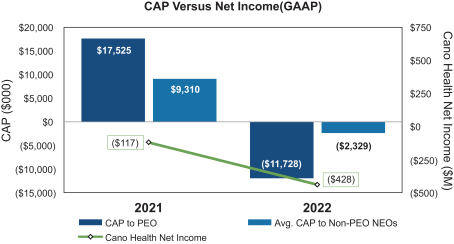election of Dr. Alan Muney and Ms. Kim M. Rivera as Class II directors at the Annual Meeting. You may have received, or may receive, materials from the Former Directors Group or other persons or entities affiliated with the Former Directors Group, including an opposition proxy statement and proxy card. Please be advised that we are not responsible for the accuracy of any information provided by or relating to the Former Directors Group contained in any materials filed or disseminated by the Former Directors Group or any other statement that they may otherwise make.
Our Board strongly urges you NOT to sign or return any proxy card or voting instruction form that the Former Directors Group may send to you as only your latest dated proxy card will be counted and thus returning a proxy card sent to you by the Former Directors Group will revoke any proxy card that you may have returned previously voting for the nominees recommended by our Board. Our Board unanimously recommends that you vote “FOR” the two Class II director nominees proposed by our Board using the WHITE proxy card accompanying this proxy statement.
The Board has fixed the close of business on May 8, 2023 as the record date for determination of stockholders entitled to notice of, and to vote at, the Annual Meeting and any adjournments or postponements thereof (the “Record Date”). Only holders of record of the Company’s common stock at the close of business on the Record Date will be entitled to notice of, and to vote at, the Annual Meeting and any adjournments or postponements thereof.
A list of stockholders entitled to vote at the Annual Meeting will be open for examination by any stockholders, for any purpose relevant to the Annual Meeting, during ordinary business hours, for a period of at least 10 days prior to the Annual Meeting at the Company’s principal executive offices at 9725 NW 117th Avenue, Miami, Florida 33178.
If you have any questions, please contact Mackenzie Partners, Inc., which is assisting with the solicitation, at (800) 322-2885 (toll free) or (212) 929-5500 (collect) or at proxy@mackenziepartners.com.
We hope that you will join us at the Annual Meeting on June [●], 2023. We appreciate your continued support of our Company.
No Appraisal Rights
Stockholders have no rights under Delaware law, our Certificate of Incorporation or our By-laws to exercise dissenters’ rights of appraisal with respect to Proposal 3.
YOUR VOTE IS IMPORTANT
Whether or not you expect to attend the virtual Annual Meeting online, please vote your shares to ensure your representation and the presence of a quorum at the Annual Meeting. Your vote is important regardless of the number of shares you own.
If your shares are registered in your name, you may vote your shares on the Internet by visiting www.cesvote.com, by telephone, or by completing, signing, dating, and returning a WHITE proxy card. If you mail your WHITE proxy card or vote by the Internet or telephone and then decide to vote your shares online during the Annual Meeting, you may still do so. Your proxy is revocable in accordance with the procedures set forth in the proxy statement.
If your shares are held in the name of a broker, bank or other nominee, and you receive notice of the Annual Meeting through your broker or through another intermediary, please vote or complete and return the materials in accordance with the instructions provided to you by such broker or other intermediary.
By Order of the Board of Directors,

David J. Armstrong
General Counsel, Chief Compliance Officer and Secretary
IMPORTANT NOTICE REGARDING THE AVAILABILITY OF PROXY MATERIALS FOR THE ANNUAL MEETING OF STOCKHOLDERS TO BE HELD ON JUNE [●], 2023
The Notice of Annual Meeting, the proxy statement and our 2022 Form 10-K are available on our website at www.canohealth.com. Additionally, you may access our proxy materials at www.viewourmaterial.com/CANO.
 Pay for performance by providing a significant percentage of target annual compensation in the form of variable,
Pay for performance by providing a significant percentage of target annual compensation in the form of variable,  No automatic or guaranteed annual salary increases or annual cash incentive payments
No automatic or guaranteed annual salary increases or annual cash incentive payments







